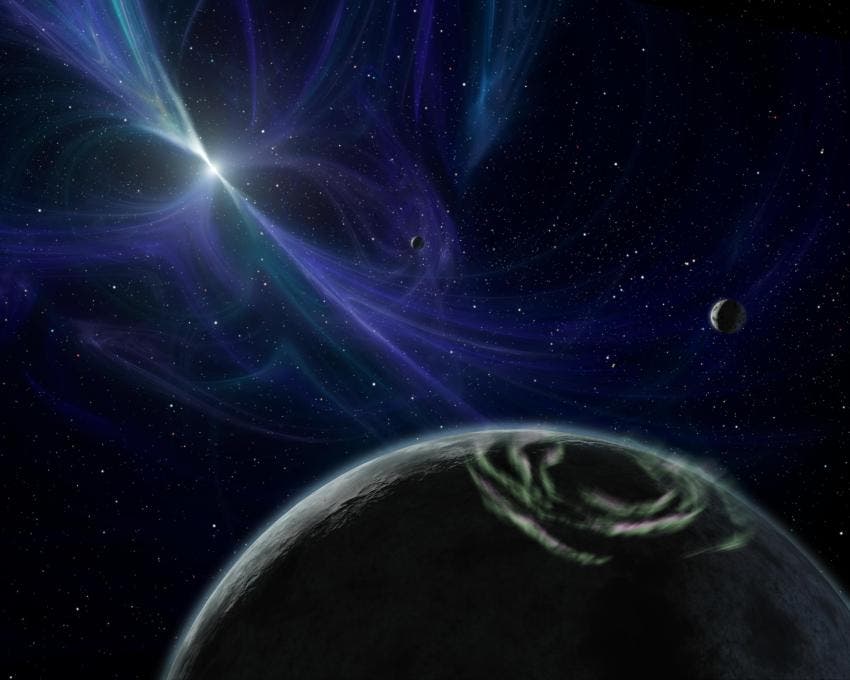Thirty years ago, researchers discovered the first ever exoplanets — planets outside our solar system. The planets were orbiting a pulsar, a type of neutron star, one of the most extreme objects in the known universe. While scientists have uncovered several other planets around pulsars since then, a new study suggests that this type of system is extremely rare.
Violent cosmic lighthouses

Finding stars is one thing — they emit a lot of light, they’re often very big, you can even see stars with the naked eye in the night sky. But finding planets is another. Planets don’t emit light of their own, so finding them is a whole different ball game. In fact, one of the most common methods through which researchers find exoplanets is by looking for dips in the light of stars — dips that could be caused by planets passing between their star and the Earth.
We now know of a few thousand exoplanets (and more are constantly being discovered every year, thanks to missions such as Kepler and TESS), but the first planets outside our solar system were only discovered in 1992.
The planets were discovered orbiting a pulsar called PSR B1257+12. In addition to being neutron stars (the densest type of star and the second densest type of object in the universe, second only to black holes), pulsars are intriguing because they rotate rapidly and emit strong bursts of radio waves from their magnetic poles at very regular rates — a sort of “pulse” of the star, hence the name.
Think of pulsars as a type of cosmic lighthouse, rotating and sending out a signal that can be detected, just that in the case of an actual lighthouse, the signal is light, and in the case of a pulsar, it’s a radio wave.
We now know that PSR B1257+12 hosts at least three planets similar in mass to the rocky planets in our Solar System, and astronomers have found several more pulsars that host planets. But is this type of pulsar-planets system common, or is it a bit of a fluke? The new study seems to suggest the latter.

“[Pulsars] produce signals which sweep the Earth every time they rotate, similarly to a cosmic lighthouse,” says Nițu. “These signals can then be picked up by radio telescopes and turned into a lot of amazing science.”
The violent conditions around the formation and evolution of pulsars are unlikely for “normal” planets to withstand. In fact, several of the planets found around pulsars are extremely unusual, including planets mostly made of diamond.
Nițu and colleagues performed the largest search of planets around pulsars to date. They specifically looked for planets that would be at least a little bit like the Earth: with masses up to 100 times that of the Earth and orbital periods between 20 days or 17 years. They found just 10 potential detections, with one particularly promising pulsar hosting at least two planets with masses just a few times bigger than that of the Earth and orbital periods of around 1.9 and 3.6 years respectively — so two planets that do resemble the Earth a little bit.
But overall, though, the survey revealed very few planets around pulsars, suggesting that this type of system is indeed very rare. Furthermore, unlike the near-circular orbits of planets in our own solar system, the planets orbiting pulsars seem to have notably elliptical orbits. Since a planet’s orbit around its star is closely linked to its formation mechanism, this suggests that these planets were also formed through different mechanisms than what we see in our solar system.
Still, there’s virtually no chance that this type of planet could actually be Earth-like. Unlike the sun, neutron stars produce no new heat and are very dense (some of the densest things, second only to black holes).
Ultimately, there’s still much we don’t know about pulsars and their environment. Better understanding pulsars and what types of stars and planets are common is crucial for our understanding of the galaxy — and the universe.
This work was presented at the 2022 National Astronomy Meeting on Monday, 11 July.









